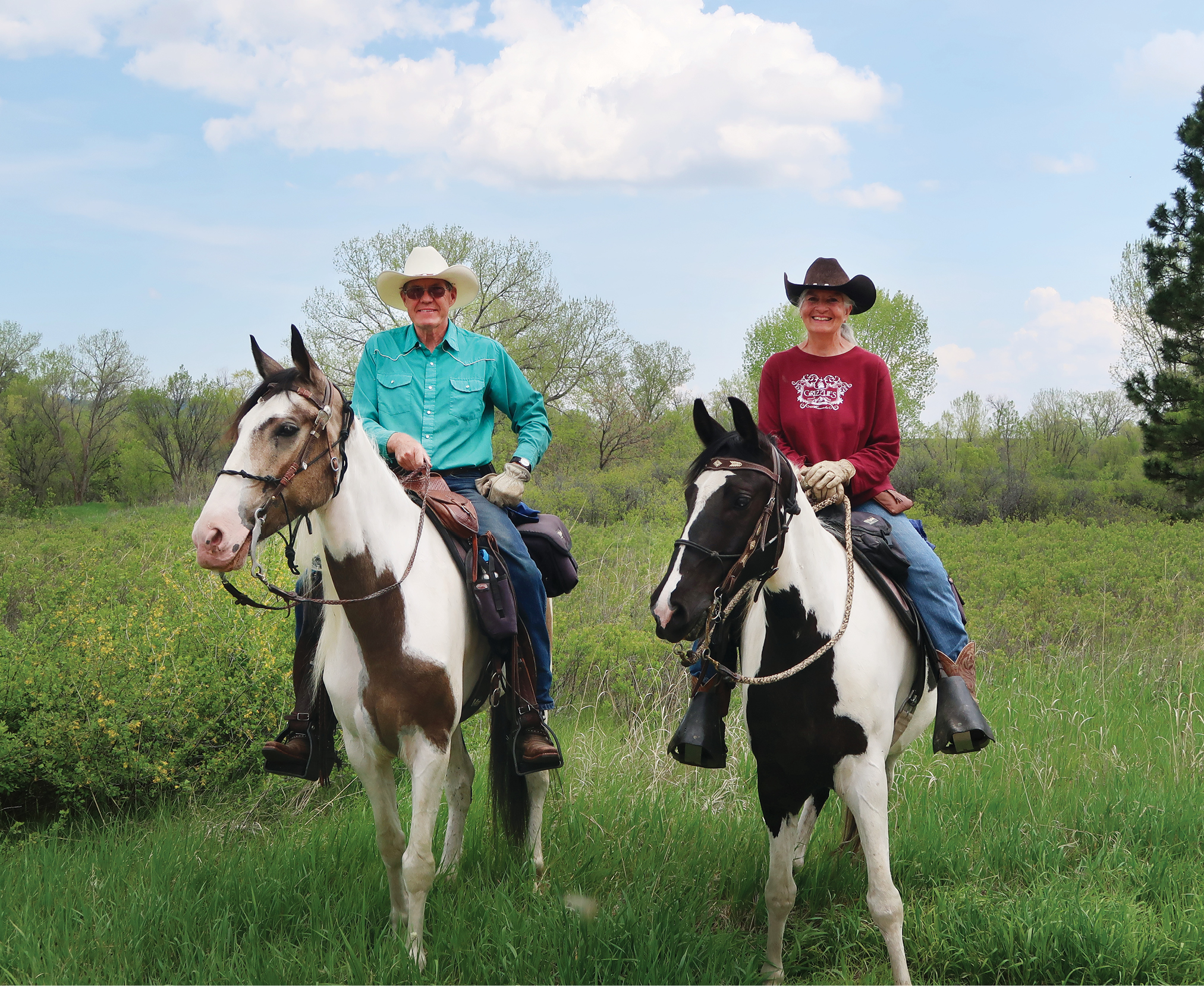Located in northwest Nebraska, Fort Robinson State Park (outdoornebraska.gov/fortrobinson) is a horse-lovers paradise, offering nearly 22,000 acres of land to explore. Just west of the park is Soldier Creek Wilderness, which provides nearly 8,000 additional acres for trail riding, so you’re bound to have the experience of a lifetime no matter where you go. This unique region holds an uncommon diversity of plant and animal life, resulting in extraordinary, natural beauty.
Fort Robinson Inn and Lodge
Upon arrival, the first stop to be made is the Fort Robinson Inn and Lodge, formerly the 1909 enlisted men’s barracks for the 8th and 12th cavalry. Here, you can check in and secure a place for you and your horse. Plus, you can procure maps of Fort Robinson, trail maps of the surrounding area, and brochures on local history. If you choose to eat at the restaurant while you’re there, we highly recommend trying the bison items on the menu.
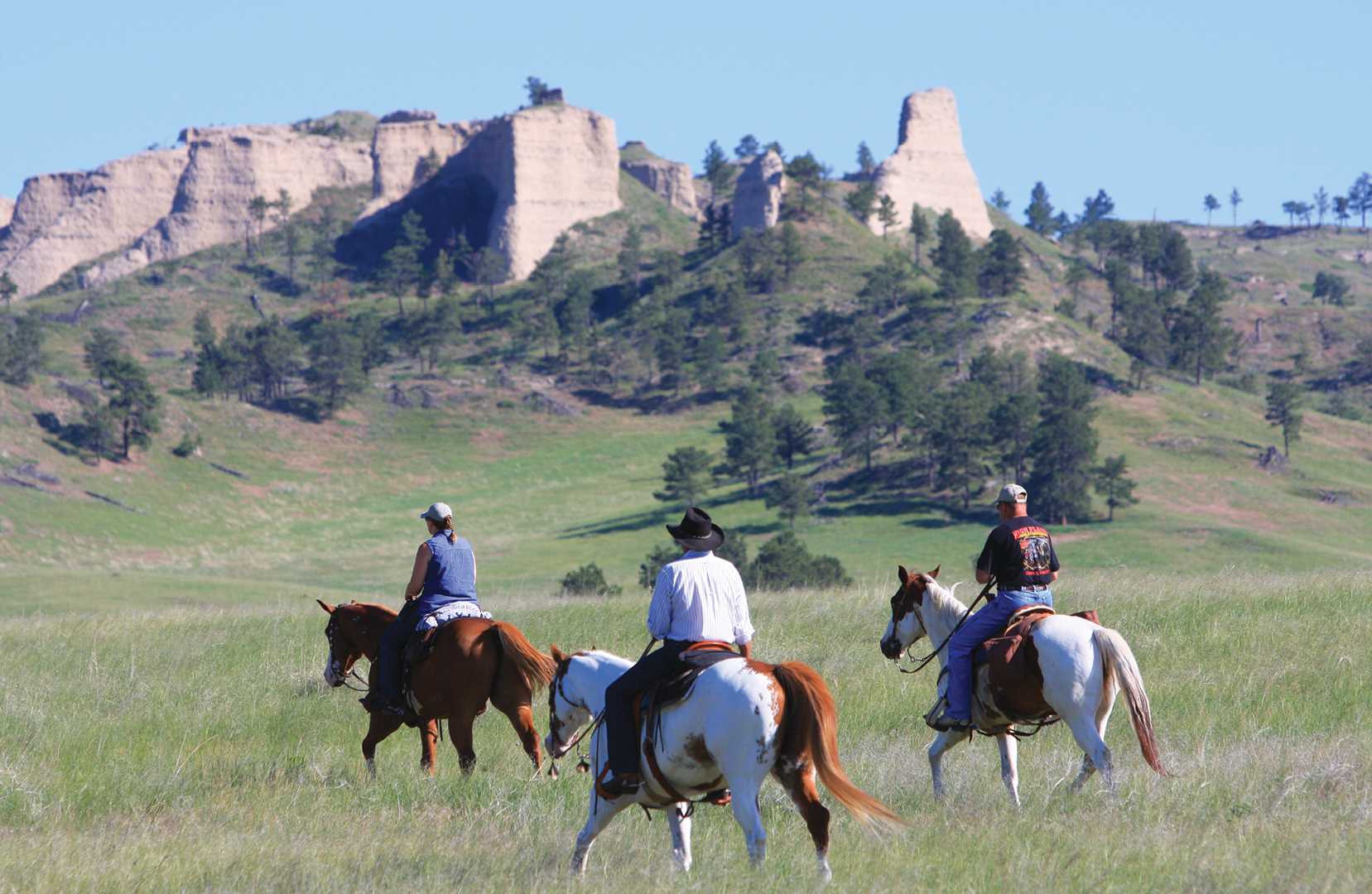
For overnight visits, you can stay in a renovated officer’s quarters that date from 1874 to 1909. All of the “cabins” have a living room, bathrooms, bedrooms, and kitchens in them. Or if you prefer to stay in your living quarters, you can choose between a full-service RV park and a partial-service park. You also have the option to camp outdoors in the tent-camping section.
Ultimately, we decided to stay in the partial-service RV park because it was close to the mare barns where we stalled our horses, Jake and Cody.
Horses can also be stalled in the historic cavalry barn built in 1909, but it’s a bit of a hike from the RV park. One thing to remember when stalling here is that you must leave a clean stall, or you’ll be charged a cleaning fee; wheelbarrows and manure rakes are available to use throughout the barn. You’re also required to provide your own feed and hay. If you need more bedding or hay during your visit, you can purchase it at a feed store in nearby Crawford.
[MORE: TRAIL RIDING DESTINATIONS]
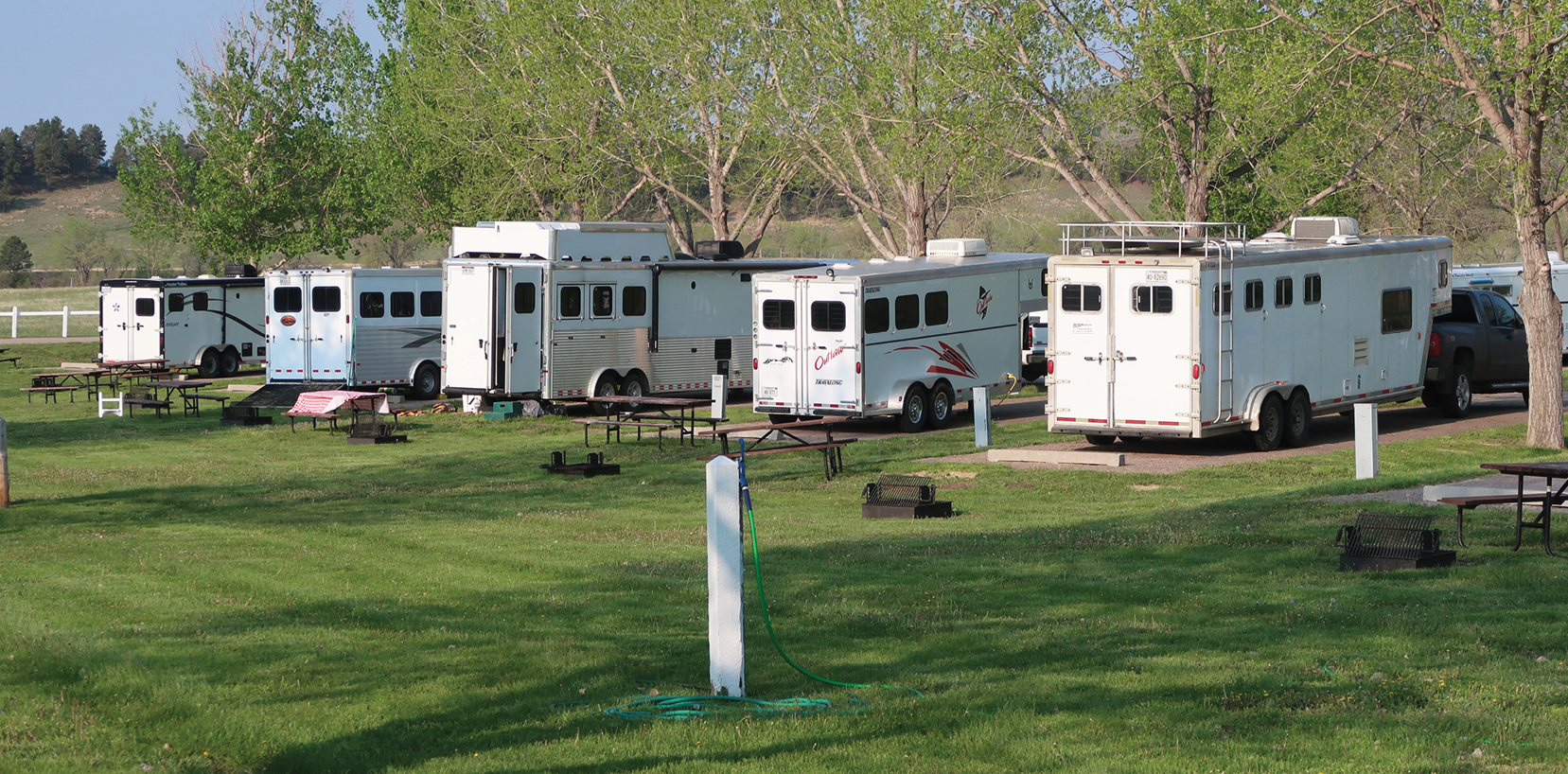
If you visit without your horse, you can still experience these beautiful trails on horseback. Be sure to visit the information booth near the Inn and Lodge to learn more about the different trail-riding options. There are also stagecoach rides available.
The information booth is also a good place to learn more about the breakfast cookouts and steak cookouts, and non-horse related activities that are offered there.
Prominent Buttes
Our rides at Fort Robinson were the first for Kent’s new horse, Cody. Originally, we had traveled to Tennessee to buy Cody, and when returning to Montana decided to stop at the fort with him and Charlene’s Spotted Saddle Horse, Jake, to spend a few days riding and camping. A fun fact about Cody’s name: Kent has a habit of using names twice, and this is the second horse we’ve had named Cody. (We’ve also had two horses named Cowboy and Buddy!)
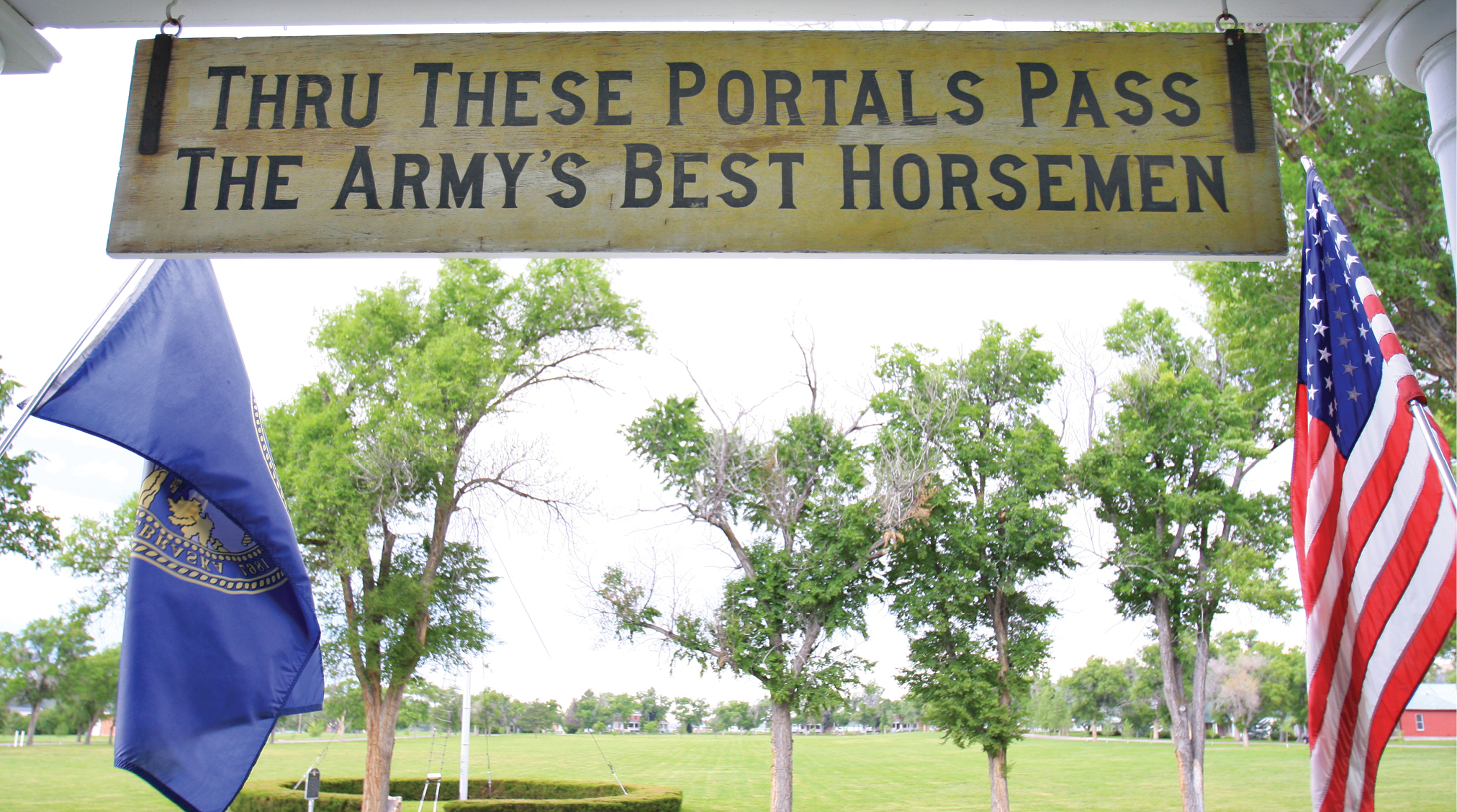
There are more than 20 miles of horse trails in the park, plus abandoned fire service roads and more riding trails in the Soldier Creek Wilderness to the west. Our first ride was north from camp toward the prominent buttes. In the flats, before the buttes, and throughout the hills and gullies, there are myriad trails and old roads to choose from.
As you ride across the flats toward the buttes, keep an eye out for antelope—sometimes referred to as pronghorn. These graceful herbivores are exciting to watch as they bound away. Generally, we never get close because they have keen eyesight and are fast. They’re capable of reaching up to 55 miles per hour. Despite their ability to run swiftly, they’re also an important link in the food chain for this region’s native predators: coyotes, bobcats, and cougars.
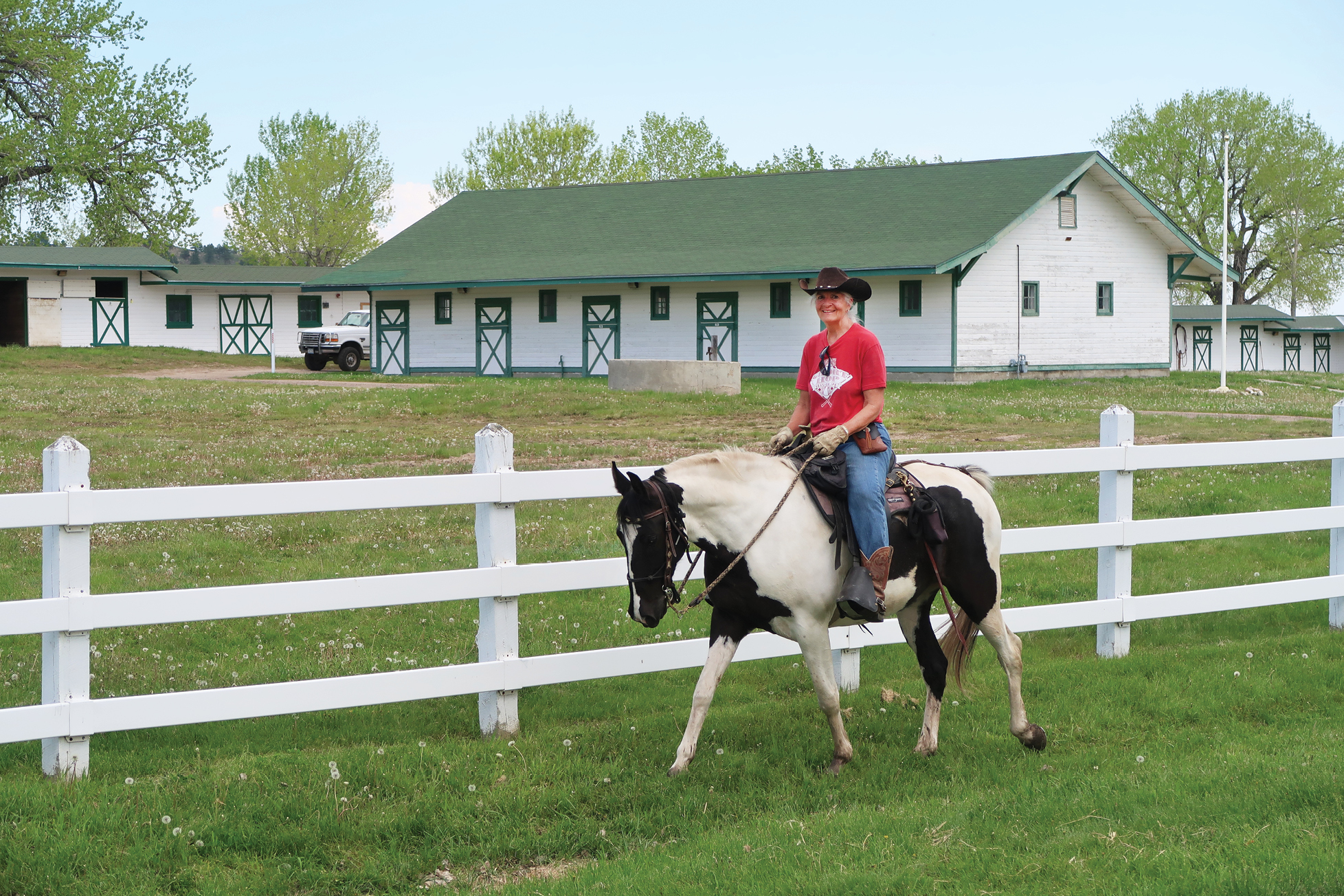
We eventually passed a pasture full of longhorn cattle—something Kent’s new horse had never seen before. To Kent’s delight, Cody took them in stride and kept heading down the trail without second guessing them. The windmill is a great place to stop to let your horses grab a drink of water before selecting one of the trails that disappear into the hills, bluffs, and buttes.
Trails curve around buttes, and riders are free to improvise loop rides through the Chaffee Butte, Red Cloud Butte, and Coffin Butte rock formations. Horses can be ridden to the top of some of these rock formations, giving riders unforgettable views of the surrounding country.
The History of Fort Robinson
There’s so much history that surrounds you as you camp and ride in Fort Robinson. The fort was originally built in 1874 and was named after Lt. Levi Robinson who was killed while on wood detail. In 1877, the famed Sioux warrior, Chief Crazy Horse, surrendered at Fort Robinson with 889 members of his tribe; a few months later he was fatally bayoneted at the fort.
In 1897, high-wheeled, Columbia bicycles were tested at Fort Robinson for field use. Although unsuccessful, they were the forerunner of the mechanized army.
There’s also plenty of horse history surrounding Fort Robinson. In 1919, a quartermaster remount depot was established at the fort. It developed into the world’s largest training, care, and breeding center for Army horses and mules. The U.S. Equestrian Team also trained at the fort from 1935 to 1939.
During World War II, military dogs were trained here, and German prisoners of war were housed at the fort. In 1948, after 74 years, Fort Robinson was declared surplus property and turned over to the U.S. Department of Agriculture. In 1955, the first parcel of land for Fort Robinson State Park was acquired by the Game and Parks Commission.
Soldier Creek Valley
On our next ride, we rode south, instead of north, along Soldier Creek Valley. Look for a gate south of the mare barn, and then ride west through another gate. After riding up a wide, open valley for a couple of miles or so, we crossed a quiet, shaded creek where the horses stopped to drink. We continued up the main valley.
[MORE: TRAIL RIDING SAFETY]
If you’re an avid birdwatcher or just enjoy listening to birds sing, this mixed-grass prairie riding is the perfect trail for you. This trail took us up to the side of a large hill where we stopped to picnic and survey the sage-green fields. While sitting on the grass with our sandwiches, we watched golden eagles float across the sky. Golden eagles live near rocky escarpments and can be found throughout most of the Northern Hemisphere. We were able to identify them by their size and color; they’re dark brown with light brown on the nape of their neck.
Having no particular destination, we simply wanted to experience, and absorb, the unique nature of this area, and in the distance from the trail we chose we could see Carter P. Johnson Lake. We continued on the trail and worked our way across the road to the north and then turned right, working our way back to camp. We rode cross-country, stopping to look at formations, flowers, and animal skeletons. We were on our own “voyage of discovery.”
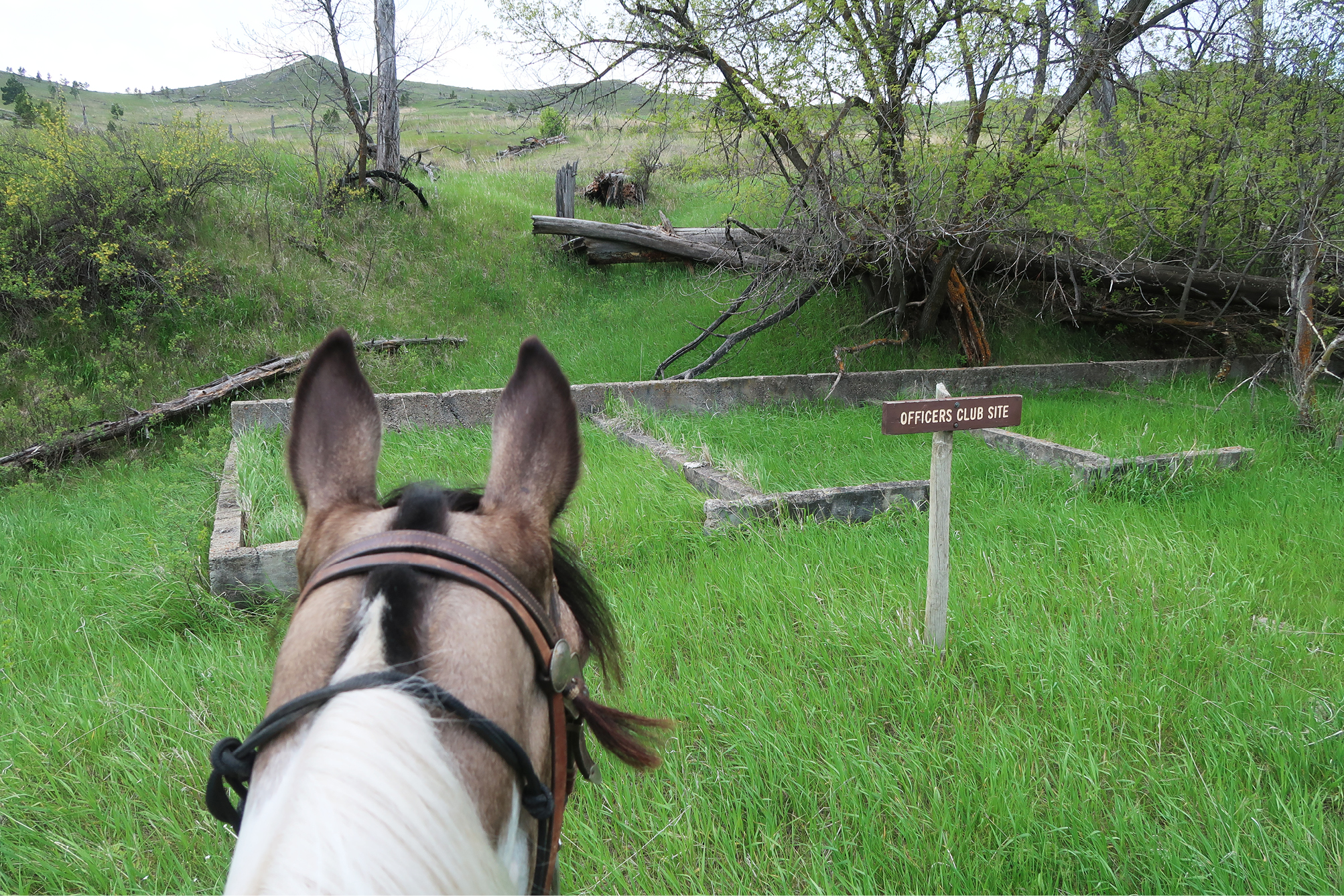
Three Forks of Soldier Creek
For our last ride, we trailered 6 miles west of camp on a good, gravel road to the Soldier Creek Wilderness trailhead. In 1989, this area became designated wilderness because of its unique, pristine qualities. Facilities at Soldier Creek trailhead are primitive: water, pit toilets, and spacious, weed-filled corrals. For self-contained campers, this campground offers a great spot for an extended stay, a number of rides, privacy, and valley views.
Soldier Creek Wilderness provides plenty of terrain for cross-country riding as well as trails and loops. The Boots and Saddle Trail and the Trooper Trail are both loops. You can ride these trails separately or combine them to make a large loop.
Three forks of Soldier Creek come together near the trailhead. The Trooper Trail switchbacks up a steep ridge, then follows the divide above the Middle Fork of Soldier Creek. For several miles it follows grassy parks and passes by old fire-killed pines. It’s also a good place to see woodpeckers.
Near two windmills the trail will turn south and drop into the South Fork of Soldier Creek. Follow the South Fork through a verdant valley shaded with stately cottonwood trees. This will take you back to the trailhead.
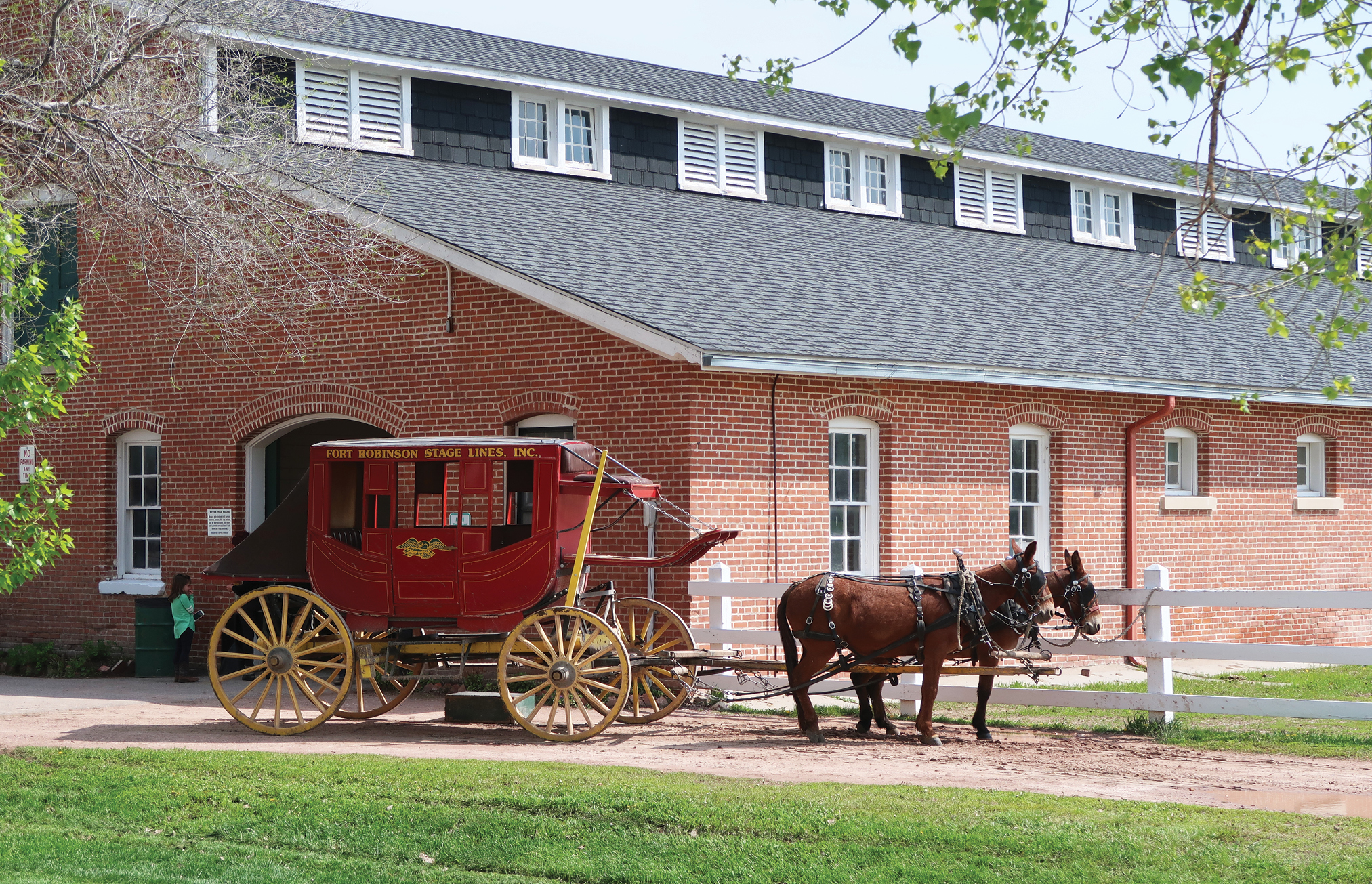
The Boots and Saddle Trail leaves from the north end of the trailhead and follows the North Fork of Soldier Creek. It slowly climbs to the northeast corner of the wilderness unit. From here, the trail turns west and crosses the North Fork of Soldier Creek at the site of the old Officer’s Club.
There’s a sign denoting the old Officer’s Club, but only foundations remain. This is a place to pause and ponder days gone by. It was here that officers would arrive by horseback and wagon from Fort Robinson to enjoy festive parties. In fact, if you take the shortcut and follow the North Fork out, you’ll be riding along the old military wagon road. Watch for ruts along the trail; we spotted two rows of ruts in places where wagons were pulled side by side to reduce dust. You’ll also see trees that are growing in some of the old wagon ruts.
If you don’t take the shortcut back, you can ride west to the Trooper Trail. On that route, just before crossing the Middle Fork of Soldier Creek, you’ll come to another historic wagon road. Turn left here for another shortcut back or continue on. This crossing point of the Middle Fork is a pretty area for lunch unless mosquitoes are lying in wait. We highly recommend bringing along extra bug-spray for both horse and rider during the summer and fall months.
THINGS TO DO
Sutler’s Store. For non-horse activities Sutler’s Store is the source for bicycle, horseshoe, and tennis-racket rentals. You can also grab snacks and drinks there.
The Fort Robinson Museum. If you’re a history buff, be sure to check out the on-site museum to learn more about the history of the fort (history.nebraska.gov/visit/fort-robinson-history-center).
Trailside Museum.This education museum has paleontology and geology exhibits. One memorable exhibit contains fossilized remains of two mammoths with intertangled tusks that died as a result of fighting (trailside.unl.edu/).
The Post Playhouse. if you plan to visit during the summer months, Post Playhouse has five musicals in rotation. For information and tickets visit postplayhouse.com.
Free rodeo. On Thursday evenings, there are free rodeo events at the rodeo arena.
Other activities. Once you’re done riding for the day, check out the nine-hole golf course and swimming pool.
